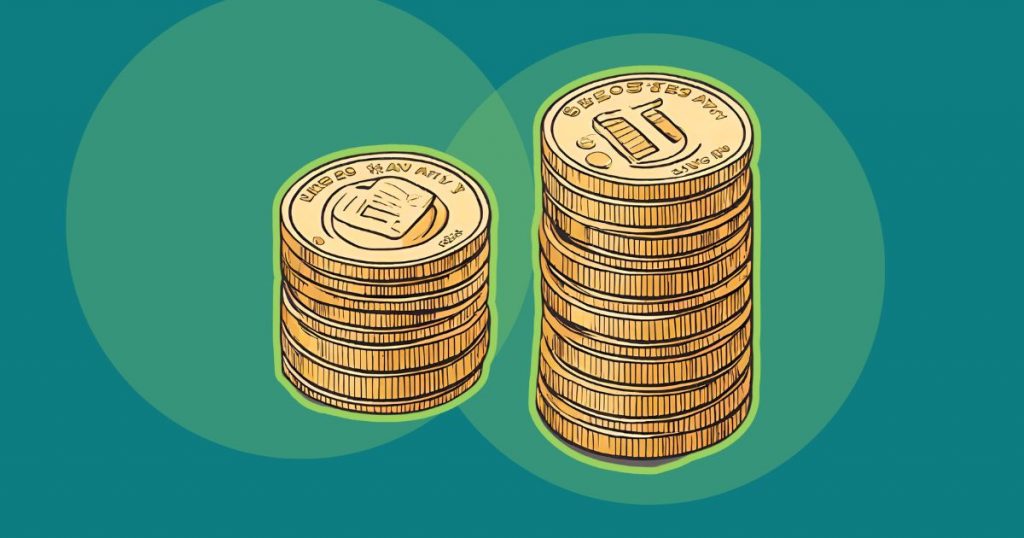The Trap of Comparing This Crisis to the Great Recession
Financial institutions are wise to learn from their history, but they need to build on the lessons from 2008—not replicate them.
Pete Matthews is executive director of business partnerships at WBUR, Boston's NPR station. He formerly managed business partnerships at The Atlantic.
Comparisons between 2008’s Great Recession and today’s cratering of the global economy caused by COVID-19 abound, generally focusing on the similarities between how brands responded then and what they learned, and how they should respond today. But when viewed through the lens of the financial services industry, the comparison doesn’t add up.
The financial services industry finds itself in a unique position during the current economic crisis. The primary reason is a simple one: Unlike in 2008, it is not the cause of this disaster. Because of this, brands can’t rely completely on the playbook that they used to respond to the crisis then—but they can build on it. Rather than focusing their efforts on rebuilding trust from the ground up, they can instead focus on engaging existing and prospective customers on a deeper, more authentic level without the burden of being associated with responsibility for the economic downturn as they were in 2008.
This is a moment for those in the financial services industry to ensure that they are delivering the right products to the right audiences through an engagement strategy tailored for 2020, not for 2008. They must ensure that they align with the values that people expect from brands today and offer the products and services that people most need right now. They can do this by continuing to build on several lessons learned in 2008: provide products and services that create the foundation of a long term customer relationship, support an underserved audience in immediate need of assistance, and use their clout for the good of the communities they serve.
Provide Foundational Services
With a dramatic, sweeping shift towards digital engagement and a reduction in the opportunity for in-person interaction, mobile and digital access points are now table stakes. For B2C financial institutions that have delayed prioritizing innovation in their mobile services, now is the time to ensure consumers have easy access to their money and investment tools.
In the years immediately following the 2008 financial crisis, people still expected to handle their banking needs via in-person interactions with their bank or financial institution. This has dramatically changed in the years since, and this change is even more pronounced right now. As the world grapples with our new reality and learns how to live life in a remote, socially distanced world, every company is having to reevaluate its approach to customer engagement. This means rethinking the value it brings to the relationship in whatever form the customer chooses to engage. Recent data and research shows that, not surprisingly, customers are choosing to engage more now via mobile apps. Since December, there has been a 50 percent increase in engagement with mobile banking apps among Americans. The final weeks of March alone saw a 72 percent increase in use of financial apps across Europe.
Mobile banking is a must-provide solution for any direct to consumer financial institution in today’s world. As my colleague Rob Peckerman noted, COVID-19 has forced brands to prioritize meeting the basic needs of their audiences; in the case of financial services brands, this means “access to the products and services that brands provide.” Peckerman warned that “if your brand does not meet these needs, nothing else you say or do will matter.”
Over the past decade, some financial institutions have put more energy into improving their overall digital and mobile product offering, but others have continued to rely more heavily on their high touch, in-person services with the goal of building more direct, personal connections with their customers. Large established financial institutions with massive branch footprints, in particular banks and wealth management providers, have placed a growing emphasis on their high touch services as points of differentiation. However, as we look toward a long, slow reduction in the need for social distancing, in-person interactions will continue to inspire anxiety and concern and will not translate into positive brand interactions as they may have even just a short time ago. With this in mind, financial institutions must be offering access to digital banking and wealth management services as a baseline for all customers.
Among companies that took to heart the lessons of 2008 and has emerged as a leader in customer experience during COVID-19 is Ally Bank. It was an early entrant into offering online-only banking solutions post-2008, and has, by necessity, prioritized its customer experience offered through its website and apps. Ally has also made the news recently for its elimination of overdraft fees for customers so that the federal stimulus checks can be accessed with no strings attached. By getting more money to its customers and simplifying the refund process, Ally is better fulfilling the most basic service a bank can provide: providing customers access to their money. While the overall loss of revenue from fees will certainly hit its bottom line, delivering on its customers’ foundational need and the resulting positive coverage it’s received from this decision makes it a smart long term position, adding to an already strong foundation of award-winning services and digital products.
Sign up for OnBrand
Our weekly digest featuring ideas on the future of brand.
Prioritize Underserved Audiences
Since the early stages of the pandemic, nearly every company has responded with some variant of the obligatory, “Here’s how we’re responding to COVID-19” statement. But beyond this reassurance, people want to know how to ensure that their financial futures are intact. Going forward, they will also continue to need encouragement to participate in their own financial future. Beyond improving mobile solutions, the financial services industry should take this opportunity to be a resource and guide for their customers (or prospective customers)—in particular, less-wealthy individuals who have historically been overlooked by financial institutions.
Unlike in 2008, financial institutions are well-positioned to offer guidance without having to worry about the perception that they have caused the crisis—and the need for guidance has perhaps never been greater. Even before the pandemic, research showed that 75 percent of Americans manage their own investments without the help of a financial advisor and only 1 percent work with a financial advisor at all. This means that a sweeping majority of Americans are in need of financial advice and guidance and—potentially—offer a significant untapped customer base for financial institutions.
This need comes during a time of tremendous uncertainty. While the unprecedented stock market drops in March have since been somewhat recouped through one of the strongest weeks for the S&P in nearly 40 years, we are still seeing the impact on retirement investments across the board. With the staggering unemployment numbers we continue to see, it remains uncertain how and when we’ll start to see retirement portfolios return to a growth trajectory. While we don’t know for sure what the long term impacts of the current economic crisis will be on consumer sentiment, this is an area where we can look to 2008 for what to expect about financial engagement.
According to Gallup, stock ownership decreased following the 2008 financial crisis from an average of 62 percent (2001-2008) to 54 percent (2009-2019). With only 54 percent of U.S. households owning stock (either direct ownership of individual equities or through retirement funds like 401ks or IRAs), there is a significant swathe of the U.S. population that is underbanked. It also means that while the current bear market has affected the wealthiest and oldest Americans most, it also means it hasn’t had the direct impact on a near majority of Americans who avoid investing altogether. According to a 2017 FDIC report, with just over one quarter of U.S. households being listed as “unbanked” or “underbanked,” there is a segment of the population that is in need of both financial services and products as well as assistance in building a plan for a financial future that is feasible within their existing budget.
Again, this represents an opportunity for financial institutions that are willing to prioritize a target audience that isn’t already wealthy, but is looking to grow their wealth and needs assistance doing so. This audience has typically never been a core focus of the broad financial sector because it is not going to deliver the high value in the short term that marketers are expected to provide. Now is the time for a change in tactics for financial services, and this audience will be no more skeptical of financial services than they ever have been—while also in greater need of guidance than ever before. The fact that this crisis has been caused by a global pandemic rather than esoteric investing schemes within the financial services industry means that there is an opportunity to engage with prospective customers on a deeper level.
A Better World Is Good Business
In the recently published Edelman Trust Barometer Special Report: Brands and the Coronavirus, 62 percent of respondents agreed with the statement, “Our country will not make it through this crisis without brands playing a critical role in addressing the challenges we face.” In order to authentically gain market share with the underbanked in the U.S., now, more than ever, it’s vital for financial institutions to use their position to contribute back to society in tangible ways that address their core prospective customers’ needs. And it is the most opportune time for financial institutions to lead this charge—as they bear no brunt of the blame for the market crisis as they did in 2008 and they are in a position to help Americans weather this crash.
We have seen efforts from financial institutions since the onset of the pandemic that have been met with both praise and derision. Several large financial institutions stepped in quickly to address foreclosures, which was recognized as a step in the right direction. But then the recent disclosure that commercial banks were making it easier for their existing customers to apply for and receive loans as part of the CARES Act—thereby taking money from independently owned small businesses that did not qualify for commercial banking services—diminished any gains made through these early gestures of goodwill.
I don’t think you can manufacture purpose all of a sudden right now during a crisis. But if you did have that really strong backbone of company values, brand values, brand mission, brand purpose, I think now is the time when people are open to actually hearing about it.
At this point, examples of financial institutions doing the “right thing” are newsworthy in a way that stands out amidst the dearth of negative news. Prudential’s recent donation of face masks to resource-starved healthcare workers earned praise and was a PR-worthy moment from an industry that is not often seen in a positive light. There have been other noteworthy examples of large institutions stepping up to use their significant clout to improve the world at large, and in this time of crisis, many have an authentic foundation from which to engage prospective customers.
“I don’t think you can manufacture purpose all of a sudden right now during a crisis,” said Anda Gansca, CEO & co-founder of Knotch, a content intelligence platform that works with many of the largest financial institutions in the U.S. “But if you did have that really strong backbone of company values, brand values, brand mission, brand purpose, I think now is the time when people are open to actually hearing about it.”
BlackRock provides an ongoing example of a large enterprise using its leverage as an investor to improve the world around it, even before COVID-19. By announcing in 2018 that it was going to begin requiring the companies it invests in to contribute to society in a positive manner, BlackRock has been building credibility as a financial institution that is using its clout to make the world a better place. This gives it a strong foundation to respond authentically during this crisis, because it’s already established a track record of leading with its values.
As CEO, Larry Fink stated in his 2020 letter to CEOs, “Our investment conviction is that sustainability- and climate-integrated portfolios can provide better risk-adjusted returns to investors.” In other words, it is good business for BlackRock to care about the environment as it creates a more sustainable world, but it also taps into their customers’ desire to make the world a better place—both during and after times of crisis.
Financial institutions have a long history of good works, both in their local communities and more broadly for society. Now is the opportune time to ensure that prospective customers are aware of those efforts, as they want the brands to whom they give their money to be striving to make the world a better place. The impact of COVID-19 on all of our daily lives cannot be overstated, but for the millions of Americans who have lost their job or wages and are in need of support in making ends meet, the financial services industry should play a vital role.
While there are indeed lessons we can learn from the 2008 Great Recession, financial institutions are positioned today in ways that make the comparison nearly irrelevant. Each of these lessons goes far beyond marketing and messaging. The financial services industry should consider the actual, tangible actions they can and should be taking today, tomorrow, and beyond. There is ample evidence at this point that we could be in for a second downturn after an initial move towards recovery, so brands across the board would be wise to get in front of another potential dip and both reassure existing customers while working to acquire new ones in the meantime.



